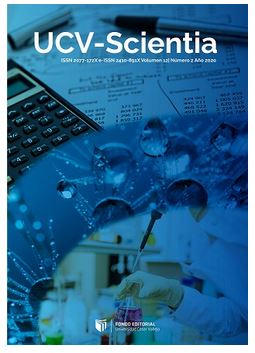Plague in Trujillo City, before XX century
DOI:
https://doi.org/10.18050/revucv-scientia.v3i2.911Keywords:
Plague, Trujillo cityAbstract
An investigation was conducted historical type registration files of the city of Trujillo, to evaluate and determine as was the appearance of plague in the region, particularly freedom in the city of Trujillo, Peru in the early twentieth century, for that reason it was determined that there were cases of plague in Trujillo and in the Chicama valley area especially large hacienda House Chicama city. We conclude that it is possible that carriers of the disease were merchants who traveled from the affected regions using the usual routes to market from the Middle East and the Mediterranean. Reached Constantinople in 1347, and Paris and the south coast of England in the summer of 1348, and why not say the city of Trujillo, Peru. The main measures used to control the risk of epidemics are controlling rats and monitoring of disease in wild rodent populations aimed at informing people of the areas where zoonotic plague is active and to take precautions against mosquito bites flea and handling of dead animals while they are in plague-endemic areas. Avoid direct contact with infective tissues exposed to patients with pneumonic plague.
Downloads
Downloads
Published
How to Cite
Issue
Section
License
Copyright (c) 2011 UCV - Scientia

This work is licensed under a Creative Commons Attribution-NonCommercial 4.0 International License.
- Share — copy and redistribute the material in any medium or format
- Adapt — remix, transform, and build upon the material.
- The licensor cannot revoke these freedoms as long as you follow the license terms.
Under the following terms:
-
Attribution — You must give appropriate credit, provide a link to the license, and indicate if changes were made. You may do so in any reasonable manner, but not in any way that suggests the licensor endorses you or your use.
-
NonCommercial — You may not use the material for commercial purposes.
- No additional restrictions — You may not apply legal terms or technological measures that legally restrict others from doing anything the license permits.














